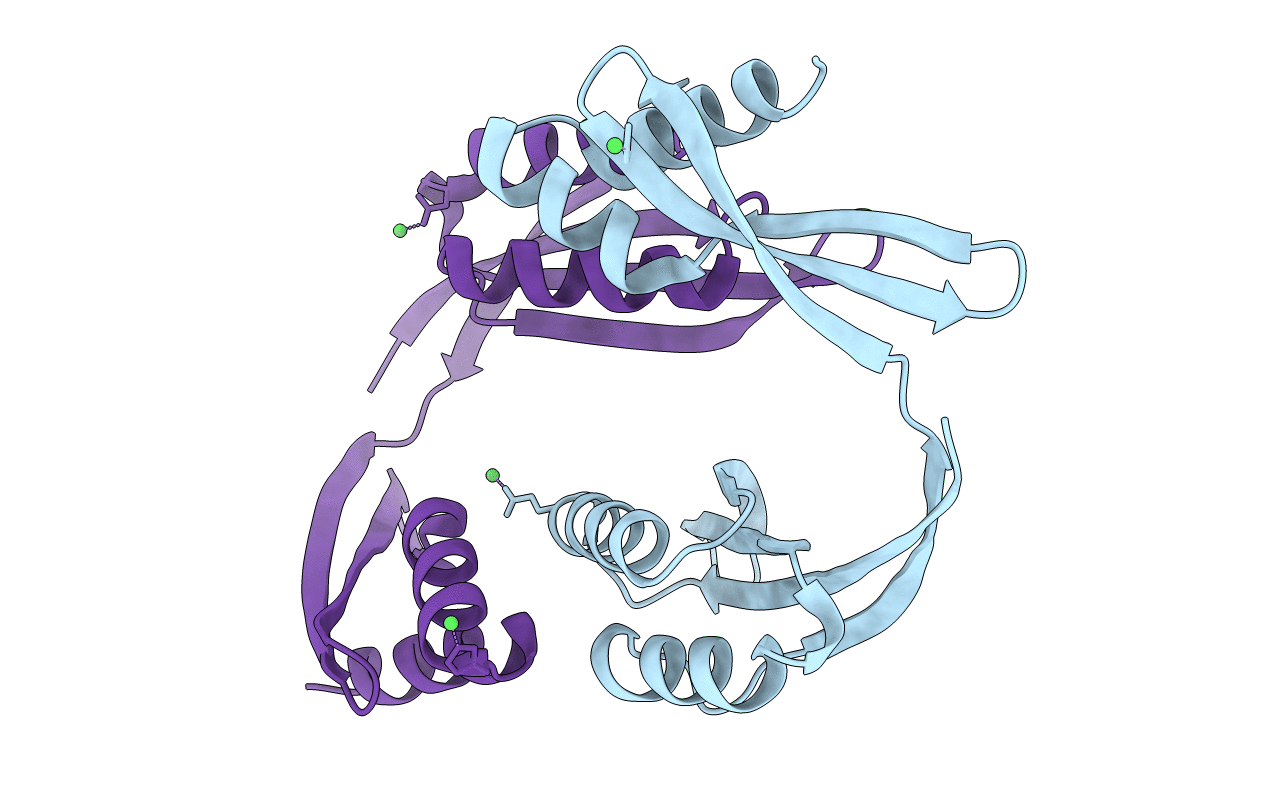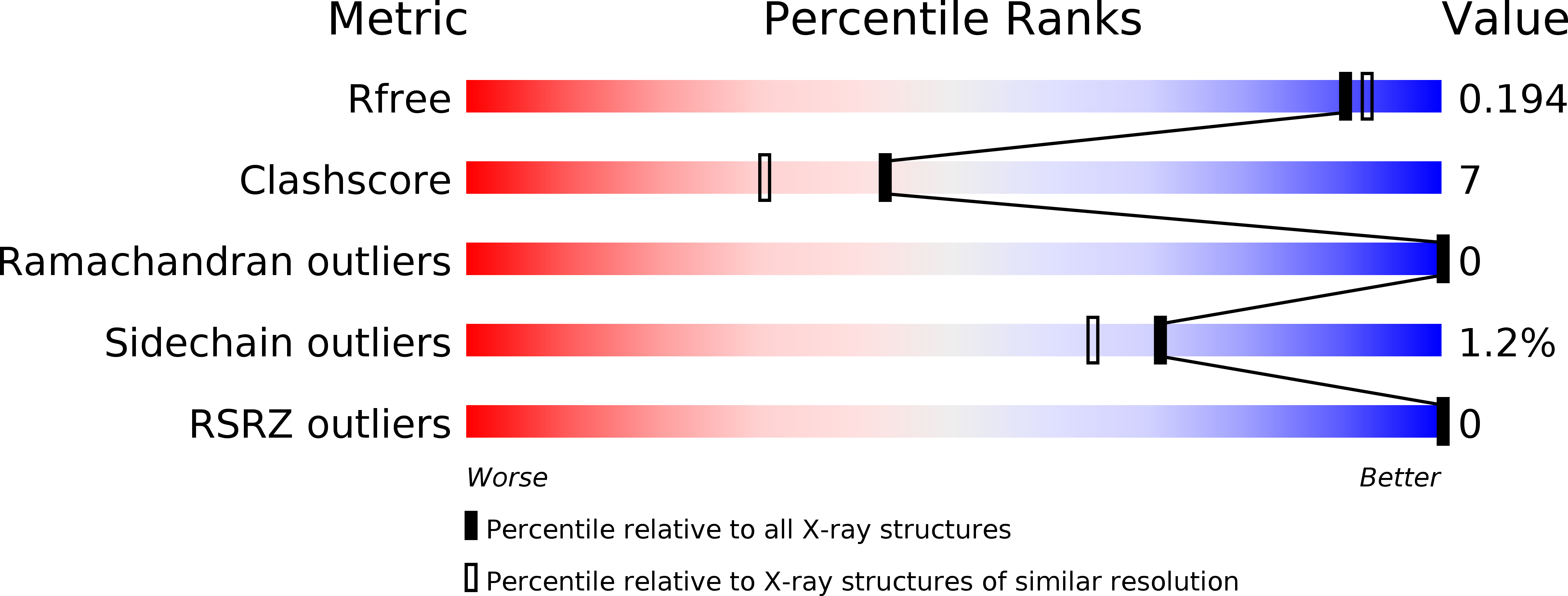
Deposition Date
2017-12-15
Release Date
2018-06-20
Last Version Date
2023-10-04
Entry Detail
PDB ID:
6BWR
Keywords:
Title:
LarC2, the C-terminal domain of a cyclometallase involved in the synthesis of the NPN cofactor of lactate racemase, in complex with nickel
Biological Source:
Source Organism:
Lactobacillus plantarum (Taxon ID: 1590)
Host Organism:
Method Details:
Experimental Method:
Resolution:
1.81 Å
R-Value Free:
0.19
R-Value Work:
0.13
R-Value Observed:
0.16
Space Group:
P 21 3


